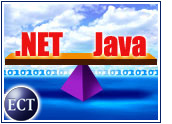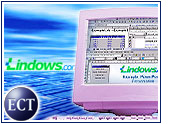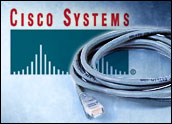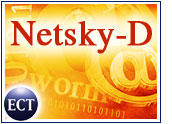
Part 1 of this article discussed the relative advantages and disadvantages of IBM’s DB2 and Oracle’s 9i software. However, IBM and Oracle, with their combined 70 percent market share, are not the only RDBMS vendors in the database race. Microsoft, the number three vendor, has seen tremendous growth in the last few years for its Windows-only SQL Server. In fact, a recent Gartner Dataquest survey reported that SQL Server captured 18 percent of new worldwide RDBMS software license revenue in 2002 — nearly 17 percent more than in 2001.
Meanwhile, Sybase Adaptive Server Enterprise has toppled from its position as the number three vendor six or seven years ago and now commands just 3 percent of the total market, Gartner Dataquest principal analyst Colleen Graham told the E-Commerce Times.
What do these shifts in the database vendor landscape mean? Is Microsoft starting to gain on Oracle and IBM? And will Sybase survive and thrive in the long run?
Simpler and Easier
“Microsoft leads all vendors in terms of manageability,” Graham said. “That’s [an] aspect of why they’re doing so well.”
She noted that SQL Server is a relatively simple database, with fewer bells and whistles than either Oracle’s or IBM’s offering. At the same time, SQL Server is now considered an enterprise-class database in certain situations. Three years ago, it would not have been placed in the same class as either IBM or Oracle.
Stan Sorensen, director of SQL Server at Microsoft (Nasdaq: MSFT), told the E-Commerce Times that the real change came when Microsoft decided about five years ago to invest seriously in building an enterprise database. The company began hiring developers away from Oracle, IBM and Digital to improve on SQL Server’s architecture.
Sorensen added that Microsoft has concentrated on making SQL Server easy to manage. For example, developers have been working to perfect such features as self-optimization and self-management, so that less fine-tuning would be required to make the database run properly.
“Nobody misses tinkering with the tint, vertical, horizontal, colors or brightness buttons on a TV,” Sorensen said. “We want our application to be smart enough to adapt itself” in much the same way.
Good Enough for Enterprise
Noel Yuhanna, senior industry analyst at Forrester Research, told the E-Commerce Times that SQL Server is now “ready for prime time in prime-time applications.”
Yuhanna noted that 70 percent of the features and functionality in RDBMS programs are not used by businesses, making 9i and DB2 seem like overkill in many instances. Overall, he said, SQL Server has a slight advantage in pricing and ease of administration over Oracle and IBM.
For her part, Graham said SQL Server’s lower cost contributed to Microsoft’s rise in the space.
“You really only need a Unix box when you’re running something fairly large that needs to be available” all the time, she noted. “A lot of people are saying, ‘I only need [my database] up 99.6 percent of the time. I can afford to take down my Windows server for maintenance.'”
Has-Been or Porsche?
As Microsoft’s star has risen, Sybase’s seems to have fallen, at least on the surface. Quality is not to blame: The company’s Adaptive Server Enterprise (ASE) database still compares to the Big Three on a technological level, according to Yuhanna. Instead, he noted, Sybase’s loss of market share may have resulted from fears that the company might not survive in the long run.
However, Tom Traubitz, senior marketing manager for enterprise data management at Sybase (NYSE: SY), questioned the importance of overall market share. He told the E-Commerce Times that one could interpret Sybase’s shrinking proportion of the market as an indication that changes in the RDBMS space have increased market share for software that handles non-mission-critical data.
After all, he said, Sybase’s niche is in providing high-performance online transaction processing (OLTP) solutions for mission-critical systems, in situations where data mutability is high and the ability to recognize what data means and deploy it is essential.
According to Traubitz, half of all Wall Street transactions are conducted using Sybase database software. Other industries that use Sybase include the U.S. military, healthcare and telecommunications.
He went on to say that Sybase has carved out an extremely profitable franchise with ASE. He likened the database’s performance to that of a Porsche and added that Sybase’s profitability, much like that of niche car makers, does not hinge on the overall health of the industry as a whole.

















































I wonder whether the analysts quoted in the article really understand enterprise relational databases.
Microsoft has made remarkable advances, and I look forward to the day when they mount a noticeable challenge to the big guys.
Firstly, they need to cease being wed to Intel architecture, and secondly be capable of running on an OS like UNIX or a mainframe.
SQL Server is great for departmental stuff, but we will stick to Oracle on Solaris. It is scalable, rock solid as far as dependability and works as advertised. Only costs us an arm and a leg to operate.